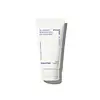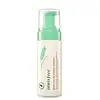What's inside
What's inside
 Key Ingredients
Key Ingredients

 Benefits
Benefits

 Concerns
Concerns

 Ingredients Side-by-side
Ingredients Side-by-side

Water
Skin ConditioningGlycerin
HumectantSodium Cocoyl Isethionate
CleansingHydroxypropyl Starch Phosphate
Diglycerin
HumectantLimonene
PerfumingPotassium Benzoate
PreservativeSodium Methyl Cocoyl Taurate
CleansingPotassium Cocoyl Glycinate
Potassium Cocoate
EmulsifyingLavandula Angustifolia Oil
MaskingButylene Glycol
HumectantAllantoin
Skin ConditioningCitric Acid
BufferingLinalool
PerfumingSodium Phytate
Citrus Aurantium Dulcis Peel Oil
Masking1,2-Hexanediol
Skin ConditioningVaccinium Angustifolium Fruit Extract
Skin ProtectingPanthenol
Skin ConditioningCaprylic/Capric Triglyceride
MaskingMaltodextrin
AbsorbentSaccharide Hydrolysate
HumectantPropanediol
SolventAcrylates/C10-30 Alkyl Acrylate Crosspolymer
Emulsion StabilisingPolyquaternium-67
Euterpe Oleracea Fruit Extract
Rubus Idaeus Leaf Extract
Skin ConditioningWater, Glycerin, Sodium Cocoyl Isethionate, Hydroxypropyl Starch Phosphate, Diglycerin, Limonene, Potassium Benzoate, Sodium Methyl Cocoyl Taurate, Potassium Cocoyl Glycinate, Potassium Cocoate, Lavandula Angustifolia Oil, Butylene Glycol, Allantoin, Citric Acid, Linalool, Sodium Phytate, Citrus Aurantium Dulcis Peel Oil, 1,2-Hexanediol, Vaccinium Angustifolium Fruit Extract, Panthenol, Caprylic/Capric Triglyceride, Maltodextrin, Saccharide Hydrolysate, Propanediol, Acrylates/C10-30 Alkyl Acrylate Crosspolymer, Polyquaternium-67, Euterpe Oleracea Fruit Extract, Rubus Idaeus Leaf Extract
Water
Skin ConditioningLauric Acid
CleansingGlycerin
HumectantMyristic Acid
CleansingSorbitol
HumectantPEG-8
HumectantPotassium Hydroxide
BufferingPEG-75
HumectantSaccharomyces/Barley Seed Ferment Filtrate
HumectantHordeum Vulgare Seed Extract
Skin ConditioningOryza Sativa Extract
AbsorbentCitrus Unshiu Peel Extract
MaskingOrchid Extract
Skin ConditioningCamellia Sinensis Leaf Extract
AntimicrobialCamellia Japonica Leaf Extract
Skin ConditioningPotassium Cocoyl Glycinate
Opuntia Coccinellifera Fruit Extract
Skin ConditioningAlcohol
AntimicrobialCocamidopropyl Betaine
CleansingPEG-60 Hydrogenated Castor Oil
EmulsifyingPropanediol
SolventDisodium EDTA
Citric Acid
BufferingSodium Benzoate
MaskingParfum
MaskingWater, Lauric Acid, Glycerin, Myristic Acid, Sorbitol, PEG-8, Potassium Hydroxide, PEG-75, Saccharomyces/Barley Seed Ferment Filtrate, Hordeum Vulgare Seed Extract, Oryza Sativa Extract, Citrus Unshiu Peel Extract, Orchid Extract, Camellia Sinensis Leaf Extract, Camellia Japonica Leaf Extract, Potassium Cocoyl Glycinate, Opuntia Coccinellifera Fruit Extract, Alcohol, Cocamidopropyl Betaine, PEG-60 Hydrogenated Castor Oil, Propanediol, Disodium EDTA, Citric Acid, Sodium Benzoate, Parfum
Ingredients Explained
These ingredients are found in both products.
Ingredients higher up in an ingredient list are typically present in a larger amount.
Citric Acid is an alpha hydroxy acid (AHA) naturally found in citrus fruits like oranges, lemons, and limes.
Like other AHAs, citric acid can exfoliate skin by breaking down the bonds that hold dead skin cells together. This helps reveal smoother and brighter skin underneath.
However, this exfoliating effect only happens at high concentrations (20%) which can be hard to find in cosmetic products.
Due to this, citric acid is usually included in small amounts as a pH adjuster. This helps keep products slightly more acidic and compatible with skin's natural pH.
In skincare formulas, citric acid can:
While it can provide some skin benefits, research shows lactic acid and glycolic acid are generally more effective and less irritating exfoliants.
Most citric acid used in skincare today is made by fermenting sugars (usually from molasses). This synthetic version is identical to the natural citrus form but easier to stabilize and use in formulations.
Read more about some other popular AHA's here:
Learn more about Citric AcidGlycerin is already naturally found in your skin. It helps moisturize and protect your skin.
A study from 2016 found glycerin to be more effective as a humectant than AHAs and hyaluronic acid.
As a humectant, it helps the skin stay hydrated by pulling moisture to your skin. The low molecular weight of glycerin allows it to pull moisture into the deeper layers of your skin.
Hydrated skin improves your skin barrier; Your skin barrier helps protect against irritants and bacteria.
Glycerin has also been found to have antimicrobial and antiviral properties. Due to these properties, glycerin is often used in wound and burn treatments.
In cosmetics, glycerin is usually derived from plants such as soybean or palm. However, it can also be sourced from animals, such as tallow or animal fat.
This ingredient is organic, colorless, odorless, and non-toxic.
Glycerin is the name for this ingredient in American English. British English uses Glycerol/Glycerine.
Learn more about GlycerinPotassium Cocoyl Glycinate is an amino acid-based surfactant and cleaning agent. This ingredient can be derived from animals or plants. It may also be synthetically created from fatty acids of the coconut and glycine.
Potassium Cocoyl Glycinate is a gentle surfactant. Surfactants help gather the dirt, oil, and other pollutants from your skin to be rinsed away. It is a mild cleanser and naturally produces foam.
Propanediol is an all-star ingredient. It softens, hydrates, and smooths the skin.
It’s often used to:
Propanediol is not likely to cause sensitivity and considered safe to use. It is derived from corn or petroleum with a clear color and no scent.
Learn more about PropanediolWater. It's the most common cosmetic ingredient of all. You'll usually see it at the top of ingredient lists, meaning that it makes up the largest part of the product.
So why is it so popular? Water most often acts as a solvent - this means that it helps dissolve other ingredients into the formulation.
You'll also recognize water as that liquid we all need to stay alive. If you see this, drink a glass of water. Stay hydrated!
Learn more about Water